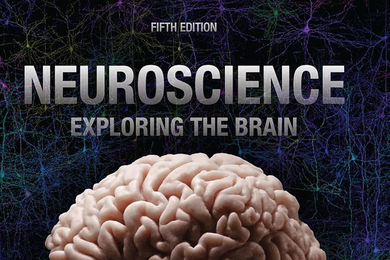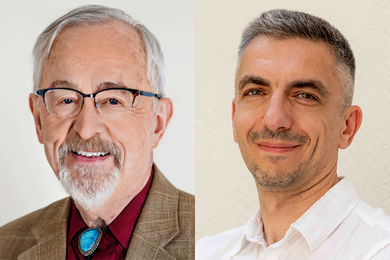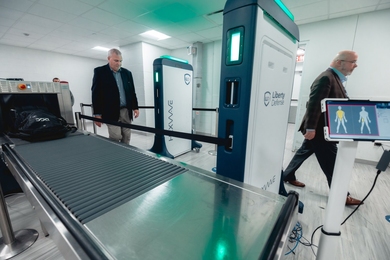More than 18 years ago, in the wake of the 9/11 terrorist attacks, the United States sent troops to Afghanistan with NATO as a measure to protect the U.S. homeland and its allies from the threat of terrorism. Now, the Trump administration hopes to bring an end what is referred to by many as an “endless war.” On Feb. 19 in Doha, Qatar, the United States signed an accord with the Taliban, the Islamic fundamentalist political and military organization that has been active within Afghanistan. The agreement calls for a cease-fire, withdrawal of foreign forces, intra-Afghan talks, and an end to terrorist activities.
The parties are moving ahead — in spite of the Covid-19 pandemic — by connecting remotely, says Fotini Christia, a professor in the MIT Department of Political Science. On March 19, Afghan government officials had a two-and-a-half-hour Skype video call with their Taliban counterparts to reach an agreement on prisoner exchange. A U.S. envoy facilitated these discussions, highlighting a committed effort toward a lasting cease-fire. The peace talks will continue virtually for now. Christia recently discussed the U.S.-Taliban agreement and whether she believes it will bring peace to the Afghan people.
Q: You wrote in a 2009 article in Foreign Affairs that to win the war in Afghanistan, the U.S. strategy should include the reconciliation of the Afghan government, NATO allies, and Pakistan, and enable the Taliban to realign with the Afghan government. Is this finally happening?
A: Not quite. What we are seeing now is very much a top-down agreement involving the Taliban and the U.S. What is agreed is a withdrawal of 12,800 U.S. forces within 14 months; a Taliban commitment not to conduct attacks against the U.S.; and a cessation of attacks between the Taliban and Afghan forces while U.S. forces withdraw. But there has been no clear discussion on what life will be like for Afghans after the peace deal. The intra-Afghan peace talks are supposed to get at that and to hammer out the details of a negotiated settlement.
These talks between the Taliban and the Afghan government were supposed to start on 10 March, but were delayed as the Afghan government is in disarray. There were parallel swearing-in ceremonies for the presidency held on March 9 by incumbent Ashraf Ghani and his rival Abdullah Abdullah. Even the Taliban spokesman pleaded with them to put their disagreements aside and focus on the peace talks.
The truth is that the Afghan government has been fearful of a possible peace agreement with the Taliban, as that would allow for the military withdrawal of its main backer, the United States. U.S. Special Envoy Zalmay Khalilzad, an American of Afghan descent who has been heading the negotiations with notable canny, has been working hard to keep the intra-Afghan negotiations on track. For instance, even though the U.S. had refused to recognize the results of the recent Afghan presidential election, recently we declared the incumbent Ashraf Ghani as the winner. In his inauguration speech, he in turn announced the gradual release of 5,000 Taliban prisoners, a precondition for the next step in the peace negotiations.
It is unclear how long the intra-Afghan talks will take, especially since it is not clear whether the rival camp of Tajik leader Abdullah Abdullah will accept a place on the table in the Afghan government negotiations led by President Ghani or will choose to boycott them. But there will likely be a lot of U.S. pressure to reach an agreement that would expedite our exit. The U.S. State Department recently announced that it will cut $1 billion in aid in 2020 and potentially another in 2021. And even though withdrawal is supposed to be conditional on events on the ground (i.e., Taliban compliance with U.S. demands), the U.S. is seen determined to go ahead with troop withdrawal irrespective of how things play out.
Q: Protecting Afghan women's rights was a part of the rationale for our fight against the Taliban, yet human rights were not a consideration in the peace agreement. Furthermore, the Taliban does not recognize the civil liberties enshrined in that country's constitution. Is this a concern?
A: This has always been a concern. It has been clear from early on that any peace agreement with the Taliban will involve a regression on human rights and civil liberties. The U.S. does not want to formally recognize that risk, as it would go against our values and what we have claimed to have been fighting for all along. It chooses to go by vague Taliban pronouncements that all Afghans, men and women, will have due rights. What those rights would be is clearly open to interpretation. For now, the Taliban leader has provided an aspirational declaration that they “shall work towards providing quality (religious and scientific) education, employment, trade opportunities, development, and growth in all public sectors because this is the basic right of all Afghans and a fundamental need for our national progress, prosperity, and well-being.”
Despite the lack of rights-related guarantees, the U.S. desire to withdraw now is stronger than ever, and that means exit will proceed despite the collateral damage on individual freedoms and women’s rights that will inadvertently follow. After all, these gains always felt extremely tentative and were only experienced by a limited subset of urban Afghans. People on the countryside have only witnessed violence and economic insecurity. They want peace at any cost.
Any hopes for some semblance of respect for human rights and civil liberties will end up depending on the U.S. making its post-withdrawal economic and development aid contributions conditional on guarantees for inclusion and respect for women’s rights.
Q: Are you optimistic that this agreement will be effective in providing a path to peace in Afghanistan?
A: The agreement will certainly enable rapid U.S. withdrawal. But it is very much an open question as to whether it will bring about peace.
The day the U.S. and the Taliban signed the peace agreement, Taliban leader Mawlawi Hibatullah Akhundzada issued a message on the “Termination of Occupation Agreement with the United States.” There he declared the “collective victory of the entire Muslim and Mujahid nation” to drive out U.S. forces after 19 years of “Jihad and struggle.” In that message he made it clear that the Taliban, referred to as the Islamic Emirate, has an intent to govern.
Beyond making a call to all internal actors to find a “rational and just solution” and announcing a call for national unity and prosperous life, including amnesty for all that fought against the Taliban, the message signaled its stately aspirations by declaring that the Islamic Emirate is keen to maintain good relations with its neighbors and the international community.
It is unclear what a negotiated settlement could look like between the Afghan government and the Taliban, given the latter’s clear desire to head the state. Whether the Taliban can commit to power sharing is a highly doubtful proposition, as many expect it to get military emboldened as soon as the U.S. withdraws, and to become the de facto ruling power. The 1988-89 Soviet withdrawal from Afghanistan saw a continuation of low-level fighting during Soviet withdrawal and an all-out civil war in the years that followed. We will have to hope that we can get it done better than the Soviets.








